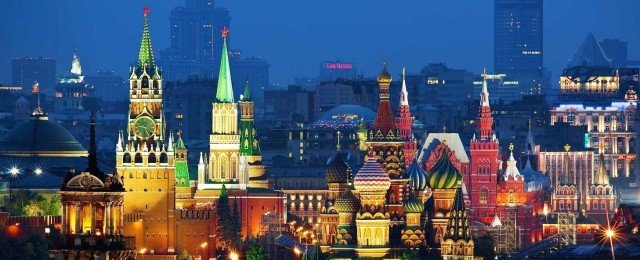Russia-China Switch to Counter US-Indo-Pacific-Strategy Mode
by Salman Rafi Sheikh, …with New Eastern Outlook, Moscow, …and the Institute of Oriental Studies of the Russian Academy of Sciences, a research institution for the study of the countries and cultures of Asia and North Africa.
[ Editor’s Note: Mr. Sheikh gives us an update on the current state of US ‘Concentrated Chaos’ foreign policy via its attempts to continue building a new bi-polar geopolitical structure, which would have been described in early American lexicon as “you are either Fer us, or Agin us”, with no middle road option.
Of course the middle road is the choice that ASEAN countries would prefer, as it is obviously more beneficial to be on good business terms with all. But at least, with the Trump regime who views peace and stability as ‘slim pickins’, it continues to pry ASEAN countries into its orbit. Hopefully Biden will not be so aggressive.
Yes, the US has a big navy, but the Chinese navy is growing quickly, along with its new stealth fighters in the pipeline and its own hypersonic missiles to threaten all US bases and the carrier battle groups in the region.
Five years ago this was not the case, nor were there Russia’s SU-57s to counter American F-35s. Sure, Russia will always be lagging behind in production numbers, but it has the advantage of a defense budget geared toward defense and mutually assured destruction.
The US is spending itself into oblivion on offense and defense, which benefits really whose pocketbooks?
So the American people have to get a dog into this fight by challenging the US forward military deployment, when there is no credible opposing military threat on the other side of the planet.
The US is there with its PacMan strategy of trying to gobble up control of everything it can to feed the giant sucking sound (as Ross Perot described it) of what looks like endless trillion dollar plus deficit budgets.
When are Americans going to wake up to the reality that the main threat to our security lies right here at home, and also in a little country in the Mideast that has had us on its string for a long time? …Jim W. Dean ]
 Jim's Editor’s Notes are solely crowdfunded via PayPal
Jim's Editor’s Notes are solely crowdfunded via PayPal
Jim's work includes research, field trips, Heritage TV Legacy archiving & more. Thanks for helping. Click to donate >>

– First published … September 19, 2020 –
Big power rivalry is often characterized by alliances and counter-alliances, involving smaller countries on both sides of the rivalry. Big powers thus tend to engage in a race for winning more and more allies to their side.
This is precisely what is happening in the Asia-Pacific region where the US’ so-called “Indo-Pacific Strategy” has triggered forces of alliances and counter-alliances.
The “Indo-Pacific Strategy” is largely aimed at entrenching the US in the region with a view to countering the increasing Russian and Chinese economic and political influence. It aims at creating conditions that would facilitate a long-term US domination of the region and thus prevent the rise of Russia and China to a level where the US domination will become meaningless.
Russia and China, on the other hand, want to make sure that the US is effectively prevented from creating political divisions in a region otherwise marked by remarkable regional connectivity, such as the ASEAN.
Russia and China have accordingly started making their moves, implementing their vision of unity as against the division that the US strategy proposes. This was precisely the message that the latest meeting of Russian and Chinese foreign minister gave. Blasting the US “Indo-Pacific Strategy”, Russia’s Lavrov said,
“We (Russia and China) noted the destructive character of Washington’s actions that undermine global strategic stability. They are fuelling tensions in various parts of the world, including along the Russian and Chinese borders. Of course, we are worried about this and object to these attempts to escalate artificial tensions. In this context, we stated that the so-called “Indo-Pacific strategy” as it was planned by the initiators, only leads to the separation of the region’s states, and is therefore fraught with serious consequences for peace, security and stability in the Asia-Pacific Region.”
Adding further about the Asia-Pacific region and presenting a counter approach to the US’ divisive policies, Lavrov said,
“We spoke in favour of the ASEAN-centric regional security architecture with a view to promoting the unifying agenda, and the preservation of the consensus style of work and consensus-based decision-making in these mechanisms, as it has always been done in the framework of ASEAN and the associated entities. We are seeing attempts to split the ranks of ASEAN members with the same aims: to abandon consensus-based methods of work and fuel confrontation in this region that is common for all of us.”

Russia’s message of unity did not come merely out of its strategic thinking. Rather, it collaborates closely with how the ASEAN is placing itself in the larger and still evolving geo-political chessboard. The recently held ASEAN Foreign Ministers’ summit made it clear that the region wouldn’t become a party to the US politics of ‘containing’ China and Russia.
The joint communique, while stressing ASEAN’s message of unity, maintained a friendly approach to China and adopted a dialogue based amicable approach to the resolution of all out-standing disputes.
Commenting, for instance, on the issue of South China Sea, ASEAN welcomed the “continuously improving cooperation between ASEAN and China, and were encouraged by the progress of the substantive negotiations towards the early conclusion of an effective and substantive Code of Conduct in the South China Sea (COC) consistent with international law.”
This ‘friendly’ thinking is in turn a reflection of ASEAN’s struggle to avoid being trapped in the US vs. Russia-China rivalry.
Indonesia’s foreign minister Retno Marsudi recently cautioned that “ASEAN, Indonesia, wants to show to all that we are ready to be a partner,” and that “We don’t want to get trapped by this rivalry.”
Russia, by reiterating ASEAN’s own message of unity, is thus presenting itself as a viable alternative to the US, which is promoting division and is putting pressure on these countries to subscribe to bi-polar politics.
That Russia, largely prompted by the US’ anti-Russia and anti-China strategy, is stretching its own reach in South East Asia is significant in that it is no longer a marginal and distant player in the region.
While China was already a big player, Russia is becoming more and more acceptable not only because of its own rise as a global power but also because of its commitment to and promotion of a multipolar vision of regional and global politics.
It largely explains why Russia, despite its still limited economic relations with the ASEAN, is, unlike Soviet-era politics, no longer seen as a ‘security threat.’ Significantly enough, the above-mentioned joint communique refers to Russia as an important ‘dialogue partner.’
The latest meeting of Russian and Chinese foreign ministers shows that Russia is all set to fully capitalize on this shifting attitude in ASEAN.
Although it is mainly allying with China, it is fundamentally preparing and maneuvering according to the way the US plans to create a ring of allies in South East Asia to counter and roll-back what the “Indo-Pacific Strategy” document calls the “revisionist” and “malign” China and Russia.
Salman Rafi Sheikh, research-analyst of International Relations and Pakistan’s foreign and domestic affairs, exclusively for the online magazine “New Eastern Outlook”.

Jim W. Dean is VT Editor Emeritus. He was an active editor on VT from 2010-2022. He was involved in operations, development, and writing, plus an active schedule of TV and radio interviews. He now writes and posts periodically for VT.
ATTENTION READERS
We See The World From All Sides and Want YOU To Be Fully InformedIn fact, intentional disinformation is a disgraceful scourge in media today. So to assuage any possible errant incorrect information posted herein, we strongly encourage you to seek corroboration from other non-VT sources before forming an educated opinion.
About VT - Policies & Disclosures - Comment Policy




Vietnam can’t and won’t do anything until she has the green light from USA. It has become an American vassal.
Unfortunately, war and chaos are much more profitable, and can be created by actors behind the scenes and multiple screens.
Comments are closed.